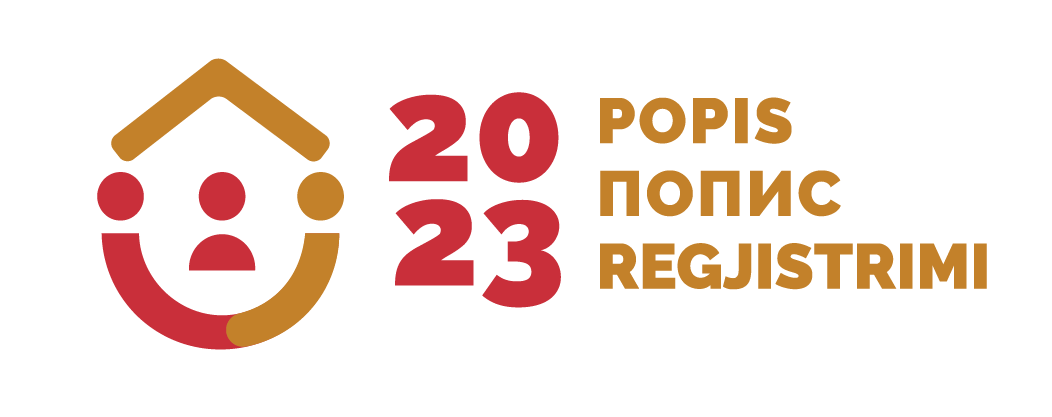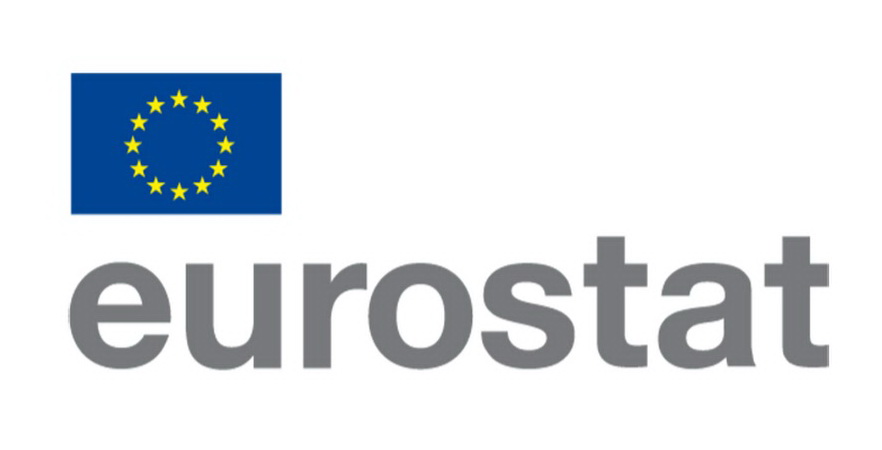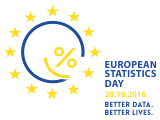| Category: | Economic statistics |
| Area: | Tourism |
| Survey / data collection: | Tourist arrivals and overnight stays in collective accommodation |
| MONSTAT metadata |
|---|
| Reference metadata |
| 1. Contact |
| 2. Metadata update |
| 3. Statistical presentation |
| 4. Unit of measure |
| 5. Reference period |
| 6. Institutional mandate |
| 7. Confidentiality |
| 8. Release policy |
| 9. Frequency of dissemination |
| 10. Accessibility and clarity |
| 11. Quality management |
| 12. Relevance |
| 13. Accuracy and reliability |
| 14. Timeliness and punctuality |
| 15. Coherence and Comparability |
| 17. Data revision |
| 18. Statistical processing |
| 19. Comment |
Note: For any question on metadata, please contact MONSTAT metadata support.
| 1. Contact Vrh | |
| 1.1. Contact organization: | Statistical Office of Montenegro - MONSTAT |
| 1.2. Contact organization unit: | Business Statistics, Foreign Affiliates Statistics and Structural Business Statistics Department |
| 1.2. Contact organization unit: | IV Proleterske 2, 81000 Podgorica, Montenegro |
| 2. Metadata update Top | |
| 2.1. Metadata last certified: | |
| 2.2. Metadata last posted: | 29 December 2023 |
| 2.3. Metadata last update: | 6 December 2023 |
| 3. Statistical presentation Top | |
| 3.1. Data description: | The survey provides data on touristic traffic in collective accommodation facilities in Montenegro as well as on the capacities of these facilities. This leads to the main indicators of tourism development in Montenegro, which are further used for analysis and development of tourism development policy. Data collected: monthly data on the number of arrivals and nights of domestic and foreign tourists, the capacity of accommodation facilities and their structure, structure of foreign tourists by country of residence. The source of data is a guestbook obliged by all the accommodation facilities involved in providing tourists accommodation and the data is collected through the TU-11 questionnaire. |
| 3.2. Classification system: | "Rules on types, minimum technical conditions, types of facilities are, Article 72, of the Law on Tourism and Catering ( ""Official Gazette of Montenegro"", number 013/18 from 28 February 2018). Classification of activities Nace Rev.2" |
| 3.3. Sector coverage: | "The survey includes all facilities providing accommodation services in collective tourism accommodation facilities on the basis of a license to conduct catering activities according to the Tourism Act no. 61/10. Accommodation facilities are classified into four groups according to the Classification of Activities (CA 2010): ? 55.1 (hotels and similar accommodation); ? 55.2 (resorts and other accommodations); ? 55.3 (activities of camps, car camps and tourist trailer camps); ? |
| 3.4. Statistical concepts and definitions: | "Tourism is the activity of persons traveling and staying in places outside their normal environment, not longer than one year, for rest, work or other personal reasons, other than employment with a business entity with headquarters in the place of visit. A tourist is any person who, outside his usual environment, spend at least one night at a hospital or other accommodation facility for accommodation but not longer than 12 months, and the reason for his travel may be rest, recreation, health, sport, religion, family, other reasons. Children are considered tourists and should include this report, regardless of their age. Tourists are not considered to be persons who visit the site for more than 12 consecutive months, persons who carry out an activity funded from a visit, persons who regularly or daily travel to the place where they work or study, migrants, frontier workers, diplomatic and consular representatives, refugees, displaced persons, persons in transit who are not formally entering the country, permanent residents traveling to another place with the intent to stay there permanently, persons who are on temporary work in Montenegro and receive salary for their work. Residence is the place where a person lived to intend to live there permanently. A tourist is registered in every place or facility where he is staying. Therefore, in the event of a change of place or object, its re-registration occurs and thus duplication of the data. Accordingly, the statistics record the number of tourist arrivals, not the number of tourists. Domestic tourists are any persons resident in Montenegro who spend at least one night in a hotel or other accommodation facility in a place in Montenegro outside their place of residence in a place in Montenegro. Foreign tourists are any person residing outside Montenegro who is temporarily resident in Montenegro and spend at least one night in a hotel or other tourist accommodation facility. Accommodation capacities are expressed through the number of accommodation facilities, the number of rooms and other accommodation units and the number of beds available to tourists. Beds are permanent and auxiliary. Permanent beds are those who are constantly available for renting tourists. Extra beds are beds intended for the comfort of guests (sofas, sofas, etc.) and spare beds with which the accommodation capacity increases during the season." |
| 3.5. Statistical unit: | Local unit by type of activity (LKAU). |
| 3.6. Statistical population: | Companies, legal entities or entrepreneurs who engaged in providing services to accommodate tourists in collective tourist accommodation. Accommodation facilities that are classified according to the Regulations on types, minimum technical conditions and categorization of catering facilities are: Hotel & Resort, wild beauty resort hotels group ( hotel, small hotel, boutique hotels, hotel garni, aparthotel, Condohotel, hostel, guest house and motel), a tourist resort, ethno village, eco lodge, villas, inns, mountain lodge, resort, camping and the like. Apart from these catering establishments there are also spas, unclassified objects and the like. |
| 3.7. Reference area: | Montenegro, municipalities. |
| 3.8. Time coverage: | Monthly data on tourist arrivals and tourist nights in collective accommodation are available from 2017. |
| 3.9. Base period: | The base period is the period of the previous year (month, year). |
| 4. Unit of measure Top | |
| The number of tourist arrivals and nights, as well as accommodation capacities, are expressed in absolute values. Changes compared to the previous period - percent (%). | |
| 5. Reference period Top | |
| Month. | |
| 6. Institutional mandate Top | |
| 6.1. Legal acts and other agreements: | The Law on Official Statistics and Official Statistical System ([Official Gazette of Montenegro No 18/12,47/19) defines provisions for collection, processing, and dissemination of data. The Law provides to the Statistical Office clear and wide legal powers to collect and access the data necessary for the implementation of Programme and Annual Plan. The Law gives a priority to the use of administrative data and right of access to individual data that are a result of survey of other official statistical producers. As an annex to legal provisions, Statistical Office has signed several memoranda on cooperation with administrative data providers. |
| 6.2. Data sharing: | "Signed agreement on cooperation with the official statistical producers: 1. Customs Administration 2. Tax Administration 3. Ministry of Finance 4. Central Bank of Montenegro 5. Trilateral agreement (MONSTAT, Ministry of Finance, and Central Bank of Montenegro) International institutions: 1. EUROSTAT 2. UN organizations 3. IMF 4. World Bank" |
| 7. Confidentiality Top | |
| 7.1. Confidentiality - policy: | "Articles 53-60 of the Law on Official Statistics and Official Statistical System (Official Gazette of Montenegro No 18/12,47/19) provide a framework for protection, use, and transmission of confidential data. MONSTAT has produced two comprehensive rulebooks that cover the procedures for individual data protection as well as keeping individual records. With purpose of the meeting legal framework on functioning of security system and statistical confidentiality there was adopted the Rulebook on Keeping Statistical Data by which Manner, Time, Technical Conditions and Organization of Statistical Data Storage to Prevent Their Destroying, Misappropriation, and Unauthorized Use is Regulated as well as the Rulebook on Contents and Manner of Keeping Records on Users of Individual Statistical Data by which contents and manner of keeping records on users of individual statistical data is regular. Pursuant to the Article 59, an access to the confidential data is limited to persons performing duties and tasks of official statistical producer and up to the stage the data are necessary for official statistical production. Persons that performs duties and tasks within official statistical producers must sign the statement on respecting the principle of confidentiality. Law on Official Statistics and Official Statistical System is aligned with the Regulation No 223/2009 and the Regulation (EU) 2015/759 from 29 April 2015 that also regulate confidentiality provisions. The Government of Montenegro adopted the Statement on Commitment of Confidence in Official Statistics (Commitment of Confidence). " |
| 7.2. Confidentiality - data treatment: | Individual data are not published. According to Article 56 of the Law on Official Statistics and Official Statistical System, individual data on natural or legal persons are confidential and constitutes an official secret. According to Article 57 of confidential data will only be used for statistical purposes only if the reporting units give explicit consent for the use of its data, such information is not considered confidential. |
| 8. Release policy Top | |
| 8.1. Release calendar: | The Law on Official Statistics and Official Statistical System (Official Gazette of Montenegro No 18/12,47/19) stipulates that official statistical producers prepare, update, and publish Statistical Release Calendar. It is published on the website of Statistical Office not later than 20 December for the next year, for all official statistical producers that includes date of releasing statistical data. Any change in date of releasing in the Calendar is published in advance in accordance with the Procedure on Unplanned Revisions. |
| 8.2. Release calendar - access: | http://www.monstat.org/eng/page.php?id=12&pageid=12 |
| 8.3. User access: | General aim of official statistical producer is to meet the needs of users, and to make an access to statistical data to users in an understandable manner, simultaneously and under the same conditions. Statistical Office is obliged to produce and disseminate official statistics in objective, transparent and professional manner, so that all users are equally treated. |
| 9. Frequency of dissemination Top | |
| Monthly. | |
| 10. Accessibility and clarity Top | |
| 10.1. News release: | Monthly releases are available at the following link: http://monstat.org/cg/page.php?id=1566&pageid=44 |
| 10.2. Publications: | Statistical Office publishes the following regular publications: 1. Monthly Statistical Review, 2. Statistical Yearbook, 3. Montenegro in Numbers, 4. Annual Statistics of Transport, Storage and Connections, 5. Number and Structure of Business Entities. In addition to the above regular ones, Statistical Office publishes also additionally publications. Some of the most important additional publications are as it follows: 1. Women and Men in Montenegro, 2. Children in Montenegro, 3. The most often used statistical data, . All publication published by Statistixal Office are available at the following link: http://monstat.org/eng/publikacije.php" |
| 10.3. Online database: | Data are available at the following link: http://monstat.org/cg/page.php?id=1567&pageid=1567 |
| 10.4. Micro-data access: | The Law on Official Statistics and Official Statistical System (Official Gazette of Montenegro No 18/12,47/19) regulates rules under which external users can obtain an access to individual data for needs of research. Article 58 defines types of scientific and research organizations that can obtain such data. Providing individual data without identifier is possible only upon a written request of scientific and research institutions, with purpose of performing scientific and research activities as well as international statistical organizations and statistical producers from other countries. Research entity signs the agreement with Statistical Office, and it signs the statement on respecting the confidentiality principle. Official statistical producers keeps a separate records on users and purpose of using the statistical data given to these users. |
| 10.5. Other: | "Data is available in excel documents: http://monstat.org/cg/page.php?id=1457&pageid=44" |
| 10.6. Documentation on methodology: domain: | The methodology is available at the following link: http://monstat.org/userfiles/file/turizam/dolasci%20i%20nocenja%202017/Metodologija%20za%20kolektivni-predlog%20(TU-11).pdf |
| 10.7. Quality documentation: | The Law on Official Statistics and the Official Statistical System ("Official Gazette of Montenegro" No. 18/12 and 47/19) defines the commitment to quality, which ensures that producers of official statistics in Montenegro work and cooperate in accordance with international principles of quality of the statistical system. In accordance with the ESS Quality Declaration, Article 338 of the Treaty on the Functioning of the EU, Regulations 759/2015 and 223/2009 and the European Statistics Code of Practice, the following documents are adopted: 1. Quality Strategy of the Statistical Office 2. Guide for the implementation of the Quality Strategy in the Statistical Office; 3. Implementation plan |
| 11. Quality management Top | |
| 11.1. Quality assurance: | "Statistical Office has chosen the implementation of elements of TQM (Total Quality Management) model that foster development and improvement of functioning of: - Institution, - Official statistical result production, and - Individual. Within middle-term deadline, Statistical Office has chosen the TQM implementation through the following objectives: 1. Strong commitment to users and other interested parties, 2. Quality statistical processes and products, 3. Professional orientation of staff members, 4. Constant improvements, 5. Reduction of overburden of reporting units." |
| 11.2. Quality assesment: | Quality is monitored at all stages of production data by the responsible statistician, in accordance with the specification for concrete survey. Collecting, entering, and processing data are commonly the subject of this monitoring. The quality of data is ensured by applying definitions that are consistent with EU Regulations 692/2011, 1051/2011 and Eurostat methodological guidelines from tourism statistics. |
| 12. Relevance Top | |
| 12.1. User needs: | International users: - Eurostat, - World Bank, - UN organizations, - International Monetary Fund - National users: - Ministries and other public administration bodies, -Local government, and -Other local government bodies. - Central bank, - Non-governmental organizations, - Students, -Researchers, - Media. |
| 12.2. User satisfaction: | The Statistical Office has adopted the Quality Management Strategy, the Guidebook to the Implementation of the Quality Management Strategy, as well as the Plan for the Implementation of the Quality Policy. In order to measure the degree to which fulfills obligations towards users and within the new quality policy, the Statistical Office conducted User satisfaction survey. The results of the survey are available on the Statistical Office website, link: http://monstat.org/uploads/files/2.%20Izvjestaj%20o%20zadovoljstvu%20korisnika%20ENG%20(Autosaved).pdf |
| 12.3. Completeness: | The survey is carried out in full coverage. When it comes to this survey, all key indicators are available: the number of arrivals and overnight stays of tourists in the collective accommodation according to the country of residence, the type of accommodation and type of site, the net utilization rate of beds and rooms. There is no available DEGURBA classification and the number of accommodation facilities available to persons with reduced mobility. |
| 13. Accuracy and reliability Top | |
| 13.1. Overall accuracy: | The survey of tourist arrivals and overnightstays in collective accommodation is done on a full coverage and the data is obtained by a reporting method, and are subject to common types of errors (processing error and non-response). |
| 13.2. Sampling error: | The survey is conducted on full coverage, so there is no error in sampling. |
| 13.3. Non-sampling error: | Not relevant. |
| 14. Timeliness and punctuality Top | |
| 14.1. Timeliness: | Questionnaires are sent to the reporting units at the beginning of the year (for all 12 months). The deadline for submission of data is 5 days after the end of the reference month. The data collection ends 15 days after the end of the reference month, while the preliminary data are published 30/31 day after the end of the reference month. |
| 14.2. Punctuality: | "Indicator punctuality represents the time difference between the actual publication of the data and the planned publication Concerning this survey, accuracy = 0, meaning that the data was published in accordance with the Statistical Release Calendar." |
| 15. Coherence and Comparability Top | |
| 15.1. Comparability - geographical: | The survey methodology is in line with the EU regulations applied by all EU countries, and are therefore geographically comparable with the data of other EU countries. |
| 15.2. Comparability over time: | Data are available from 2017. |
| 15.3. Coherence - cross domain: | In some cases, data from other areas of economic statistics may be used for cross-checking data. |
| 15.4. Coherence - internal: | Data are internal coherent. |
| 17. Data revision Top | |
| 17.1. Data revision - policy: | Statistical Office has adopted the revision policy and it is available on the website http://www.monstat.org/eng/page.php?id=1411&pageid=1411 |
| 17.2. Data revision - practice: | Published data are considered as preliminary until the next release when preliminary data become final. |
| 18. Statistical processing Top | |
| 18.1. Source data: | Thesurvey is carried out by the reporting method at full coverage. There are about 500 reporting units. The statistical register of accommodation units is used, which is supplemented by different sources: business register, register of the Ministry of Sustainable Development and Tourism and information from the field. |
| 18.2. Frequency of data collection: | Monthly. |
| 18.3. Data collection: | Data collection is conducted through a questionnaire TU-11 that the reporting units are delivered to the 5 th of the month by mail, email or fax. From May 2016 reports are also collected by an electronic questionnaire. |
| 18.6. Adjustment: | Not relevant. |
| 19. Comment Top | |







